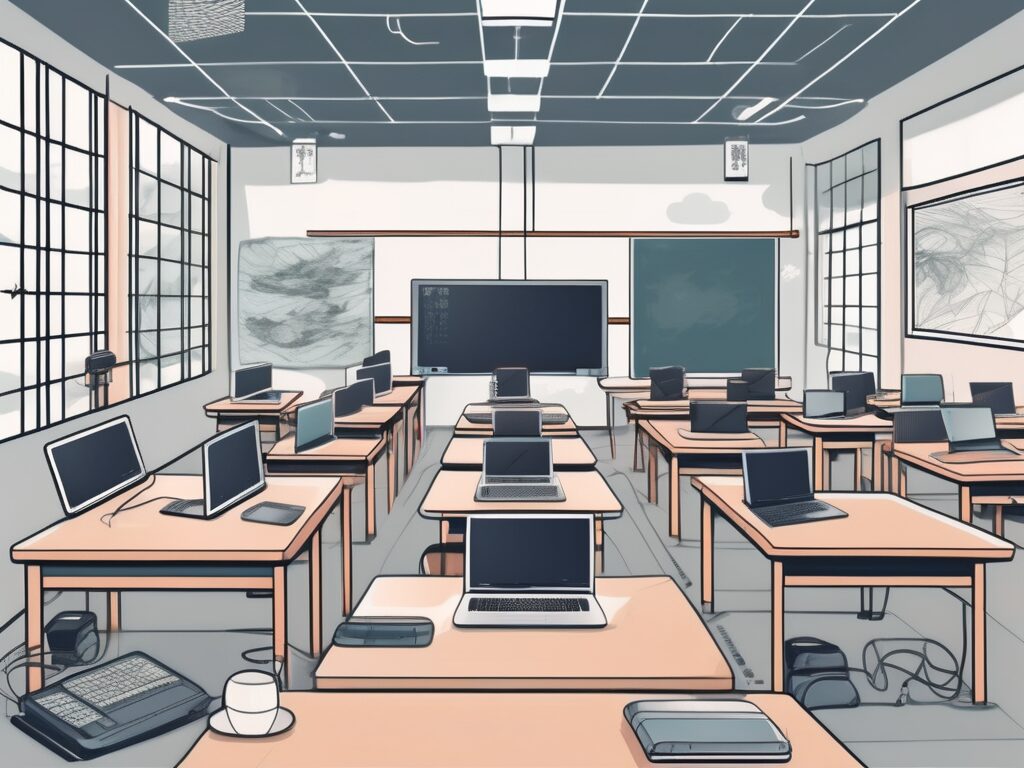The Land of the Rising Sun, Japan, is renowned for its technological prowess and innovative spirit. However, when it comes to education, the integration of technology in classrooms is a relatively new concept. This article delves into the fascinating journey of how Japan is embracing technology in its educational landscape, the challenges encountered, and the benefits reaped.
The Advent of Technology in Japan’s Education System
Japan’s education system has long been known for its rigour and high standards. However, the advent of technology has brought about a paradigm shift in the way education is delivered. The traditional chalk-and-blackboard method is gradually giving way to interactive whiteboards, tablets, and online learning platforms.
Interestingly, this shift mirrors the global trend towards digital education. Just as we’ve seen the rise of e-commerce in the retail sector, or the surge of streaming platforms in the entertainment industry, education too is undergoing a digital transformation. In Japan, this transformation is being driven by a government initiative known as the “Super Global High School (SGH)” programme, which aims to equip students with the skills necessary for the 21st century.
Challenges in Integrating Technology
Infrastructure and Accessibility
One of the primary challenges in integrating technology in Japan classrooms is infrastructure. Not all schools are equipped with the necessary hardware, such as computers and smartboards, to facilitate digital learning. Furthermore, there’s the issue of accessibility. While urban schools may have the resources to implement technology, rural schools often lag behind due to limited access to high-speed internet and advanced tech tools.
It’s a bit like trying to watch the latest blockbuster on a vintage television set. You might be able to get a glimpse of the action, but you’re certainly missing out on the full experience. The same applies to digital education – without the right tools and access, students can’t fully benefit from the advantages of technology.
Teacher Training and Curriculum Development
Another challenge lies in teacher training and curriculum development. Integrating technology in classrooms isn’t just about having the right gadgets. It’s also about knowing how to use them effectively to enhance learning. Teachers need to be trained not only in the technical aspects of these tools but also in how to incorporate them into their teaching strategies.
Think of it like learning to drive a new car. It’s not enough to know where the accelerator and brakes are. You also need to understand how to navigate the roads, follow traffic rules, and react to different driving conditions. Similarly, teachers need to learn how to navigate the digital landscape, follow online etiquette, and adapt to different learning scenarios.
Benefits of Technology Integration
Enhanced Learning Experience
When used effectively, technology can significantly enhance the learning experience. Interactive whiteboards, for instance, can make lessons more engaging and interactive. Online platforms can provide a wealth of resources for students to explore at their own pace. It’s like swapping a traditional cookbook for a cooking app. The app not only provides recipes but also offers video tutorials, ingredient substitutions, and user reviews, thereby enriching the cooking experience.
Preparation for the Future
By integrating technology in classrooms, Japan is preparing its students for a future where digital literacy will be as essential as reading and writing. In a world that’s increasingly driven by technology, having a strong foundation in digital skills is akin to having a passport to global opportunities.
Conclusion
Integrating technology in Japan classrooms is a complex yet rewarding endeavour. Despite the challenges, the potential benefits are immense. As Japan continues to navigate this digital transformation, it’s clear that the journey is as important as the destination. After all, education is not just about imparting knowledge, but also about equipping students with the skills to navigate the ever-evolving landscape of life.
So, whether it’s swapping chalkboards for interactive whiteboards, textbooks for tablets, or traditional classrooms for virtual ones, Japan’s journey towards integrating technology in education is a fascinating study of innovation, resilience, and foresight.
Elevate Your Teaching Career with Technology and iPGCE
As Japan’s educational landscape evolves, so does the role of educators in harnessing technology to enrich learning experiences. If you’re inspired to be at the forefront of this transformation and overcome the barriers of qualification requirements, the International Postgraduate Certificate in Education (iPGCE) is your gateway to success. With iPGCE, you can experience a 50% increase in interview callbacks, a 45% boost in promotion rates, and connect with a global network of professionals, enhancing your adaptability to international curricula. Embrace the opportunity to advance your career, increase your salary, and join a community of educators who are shaping the future of education. Join the UK’s #1 Teacher Training Course today and take the next step in your professional journey.

